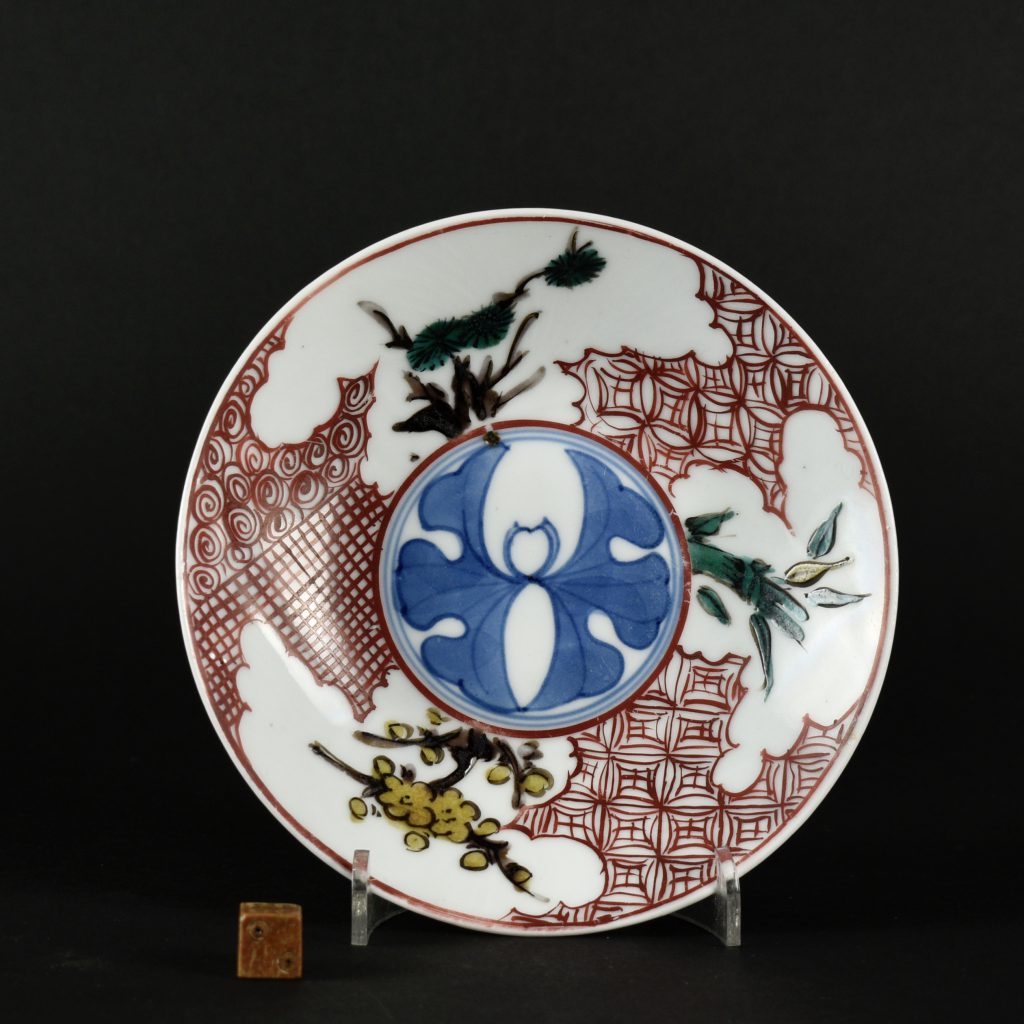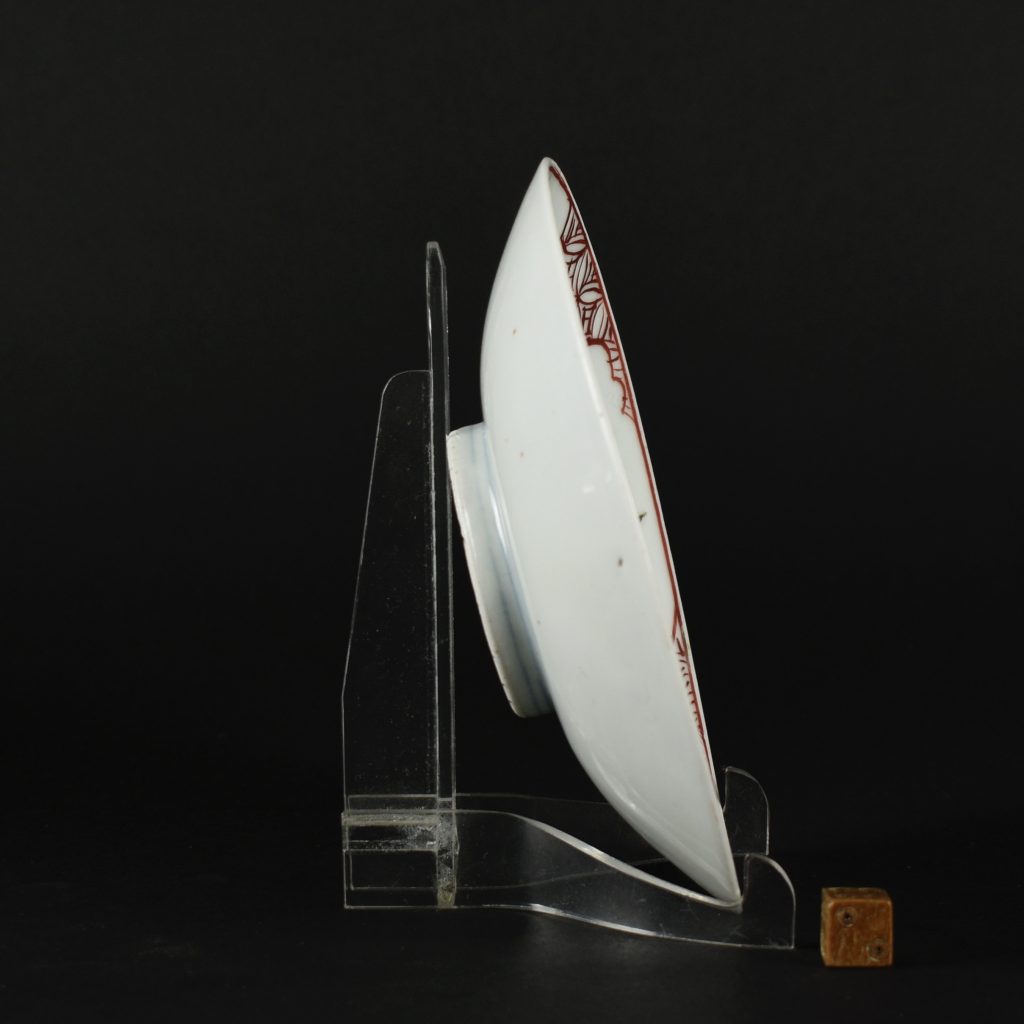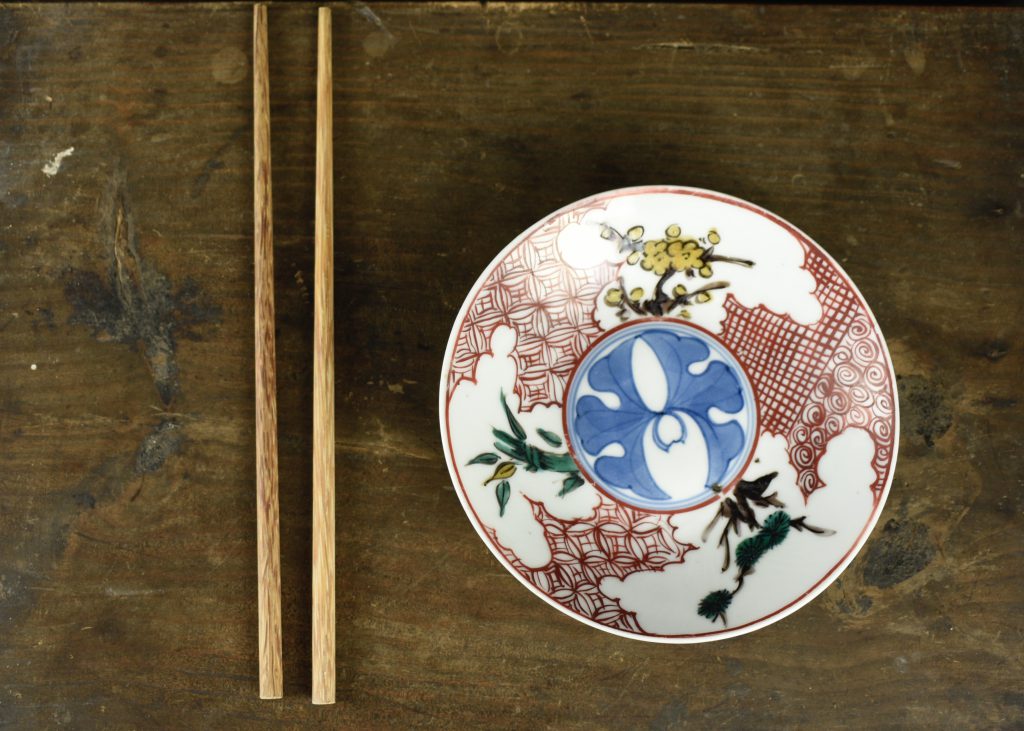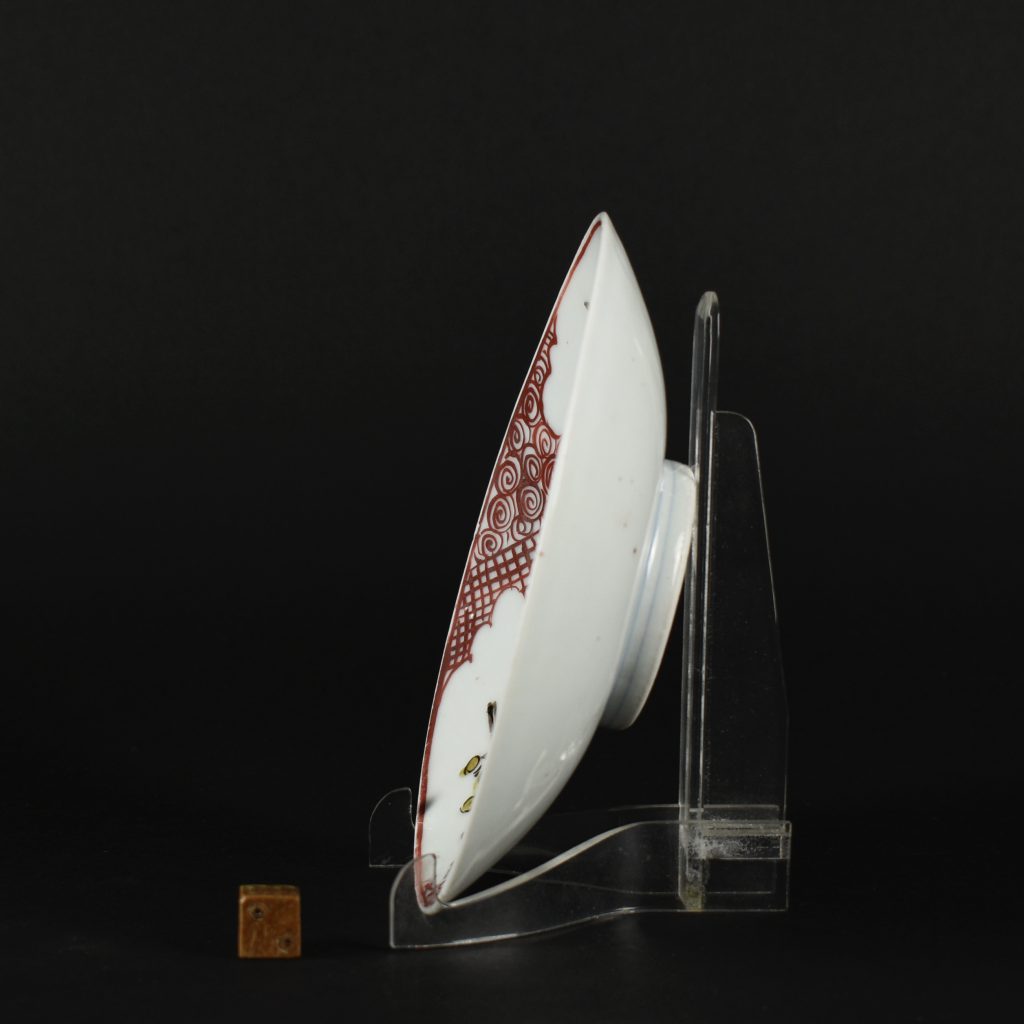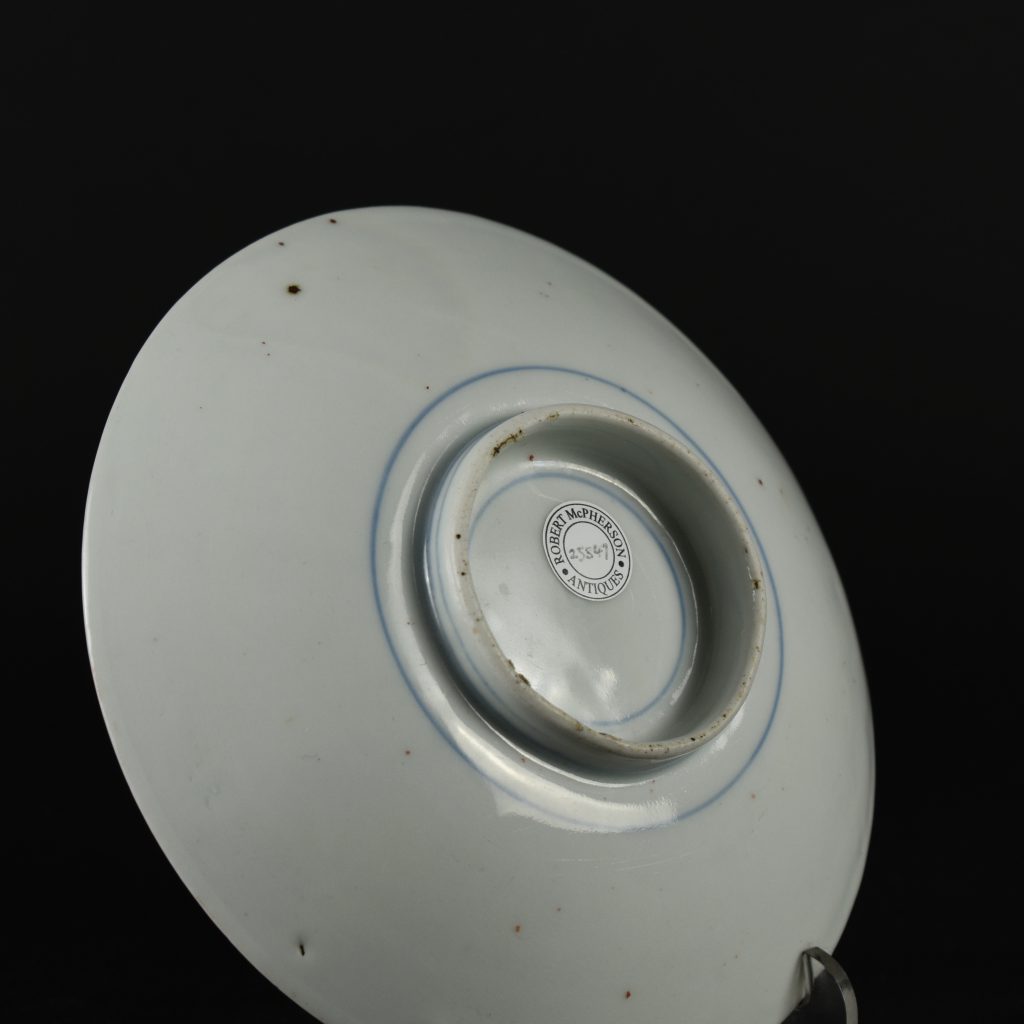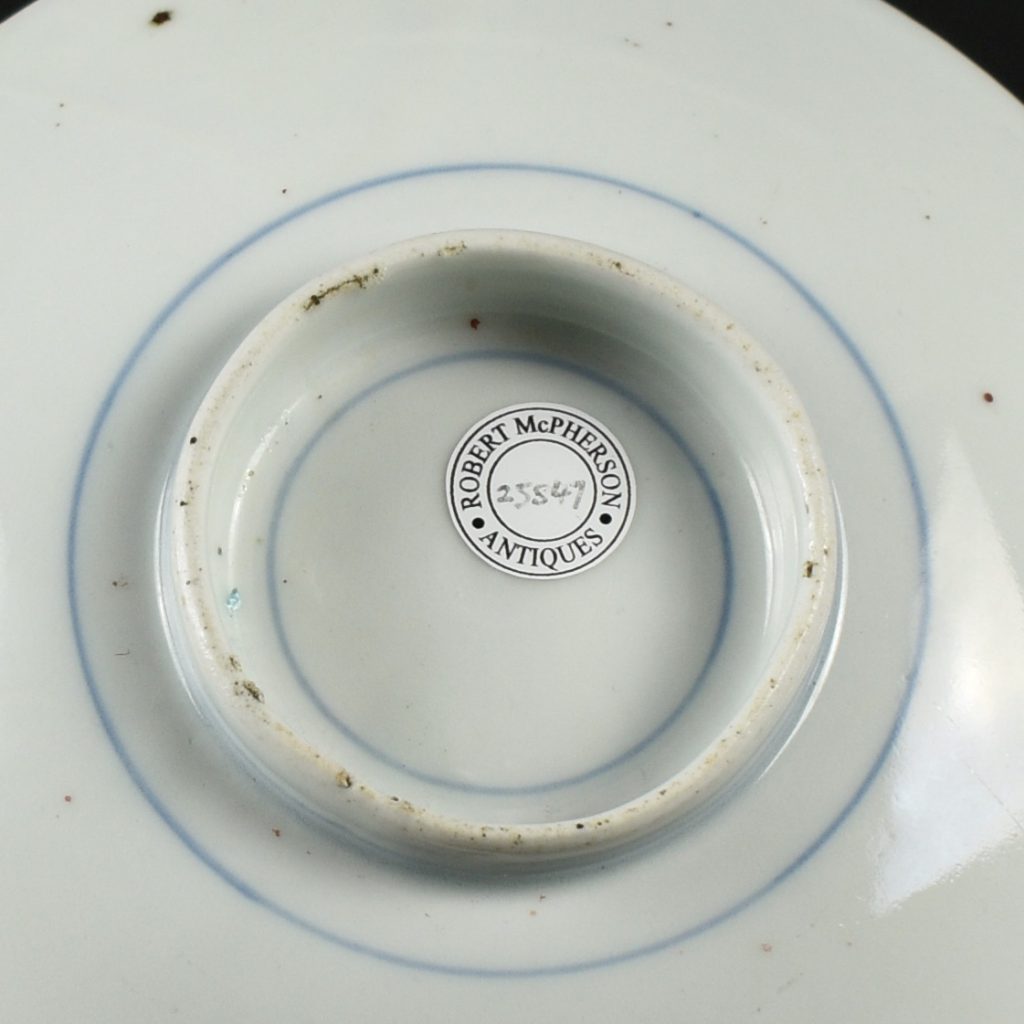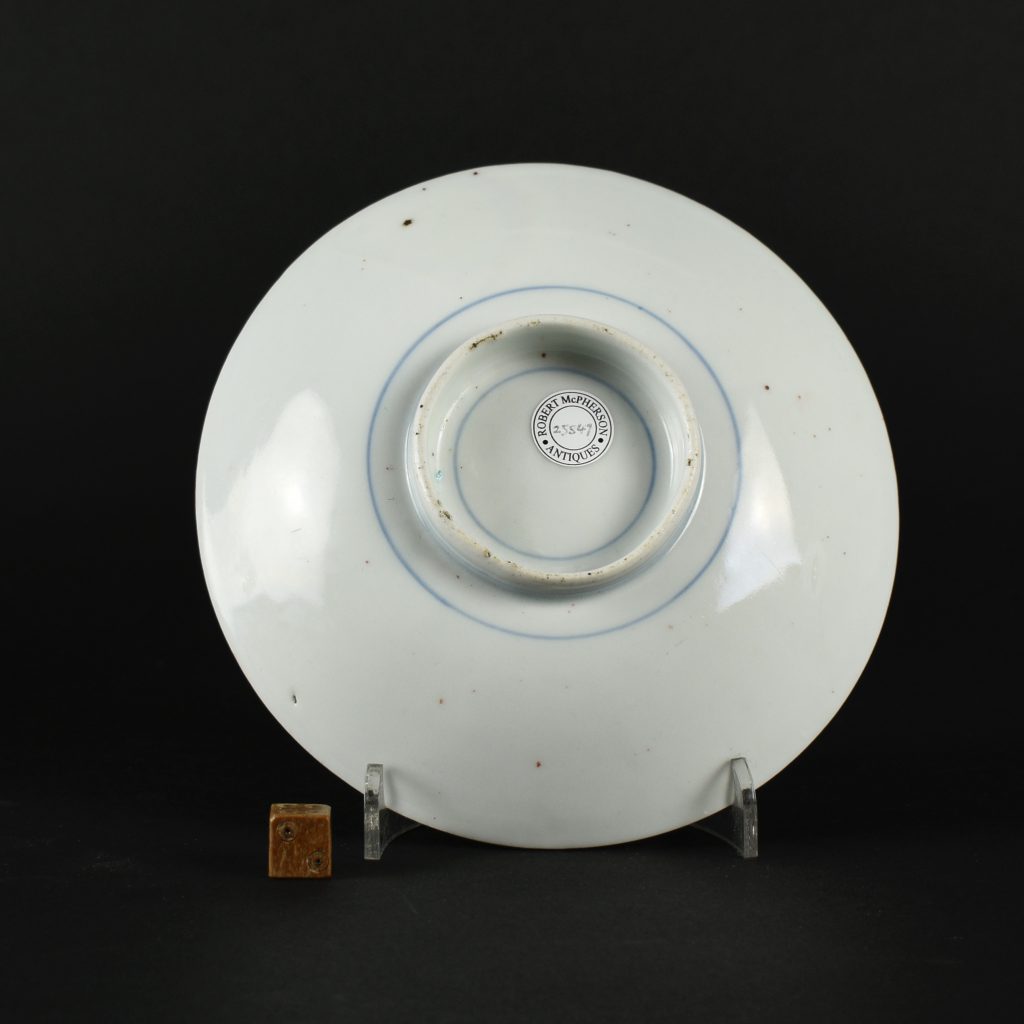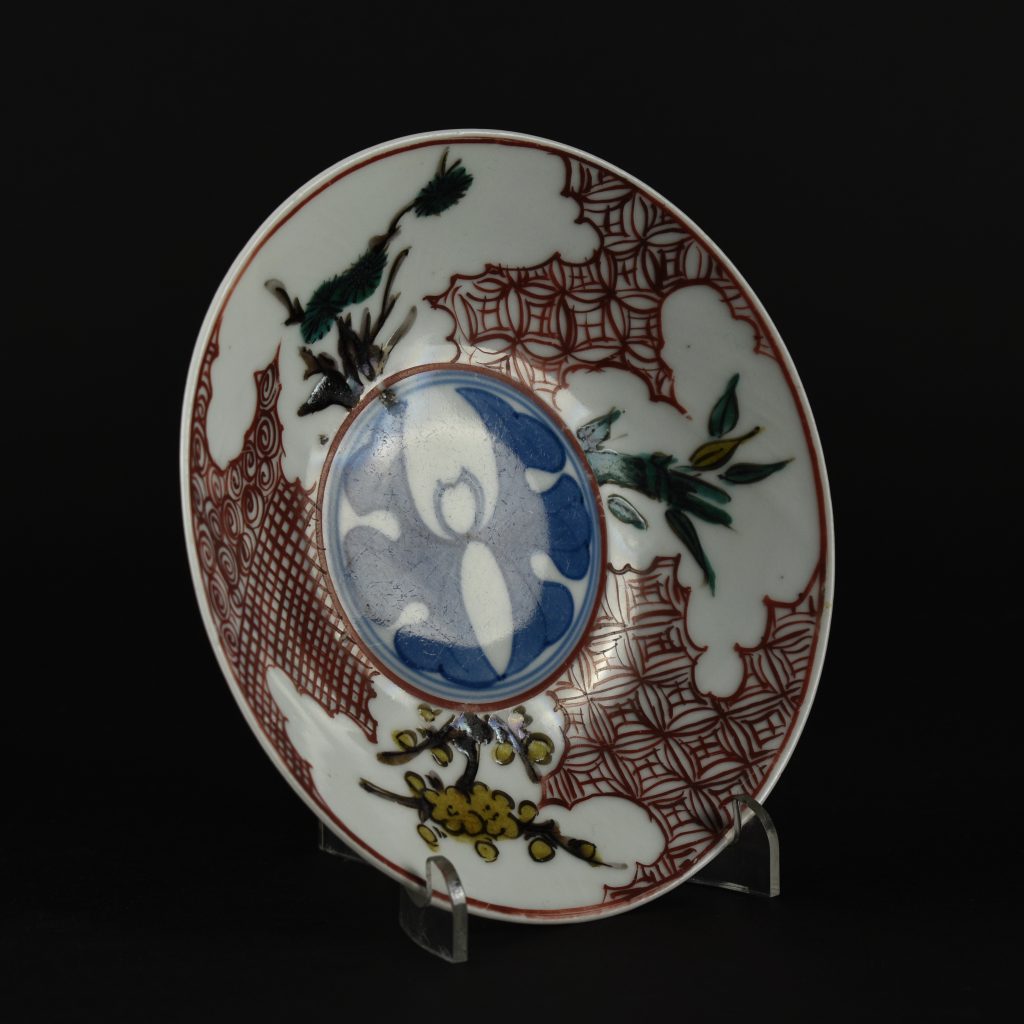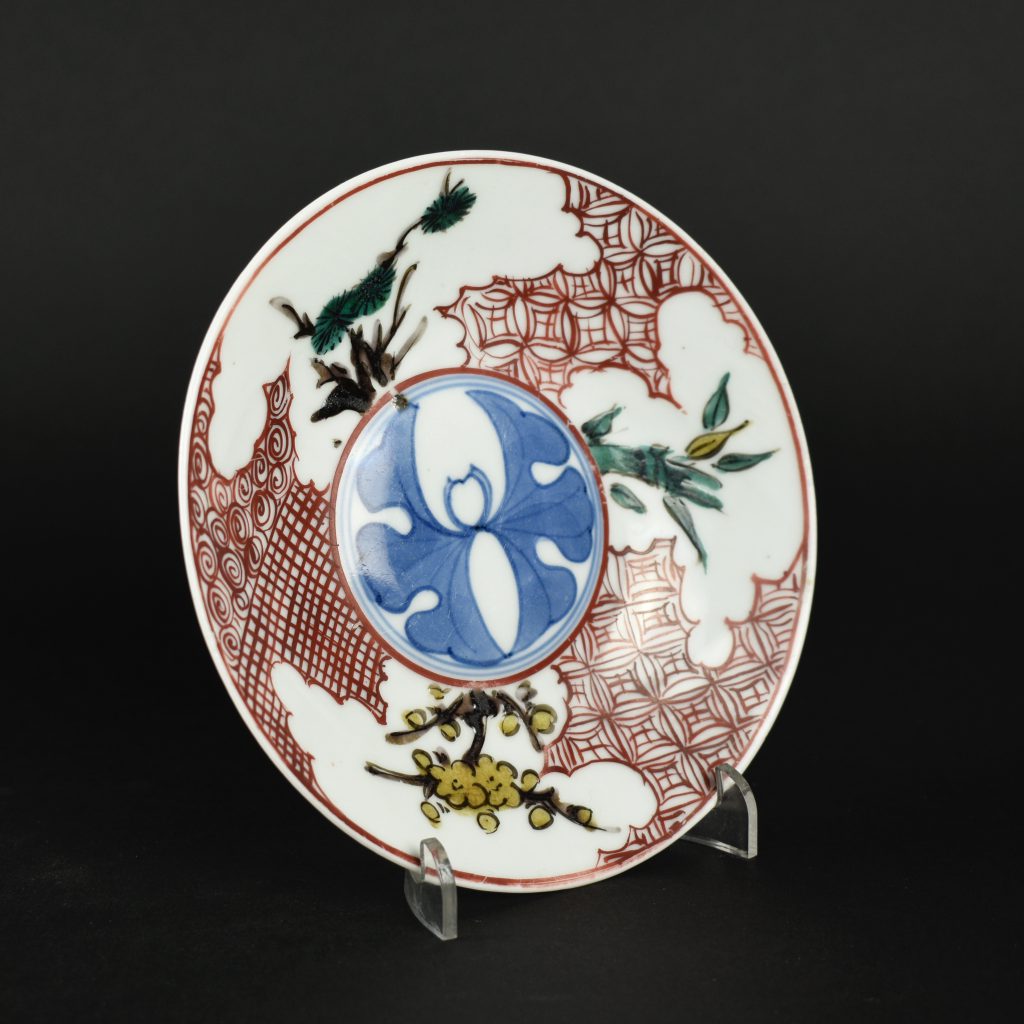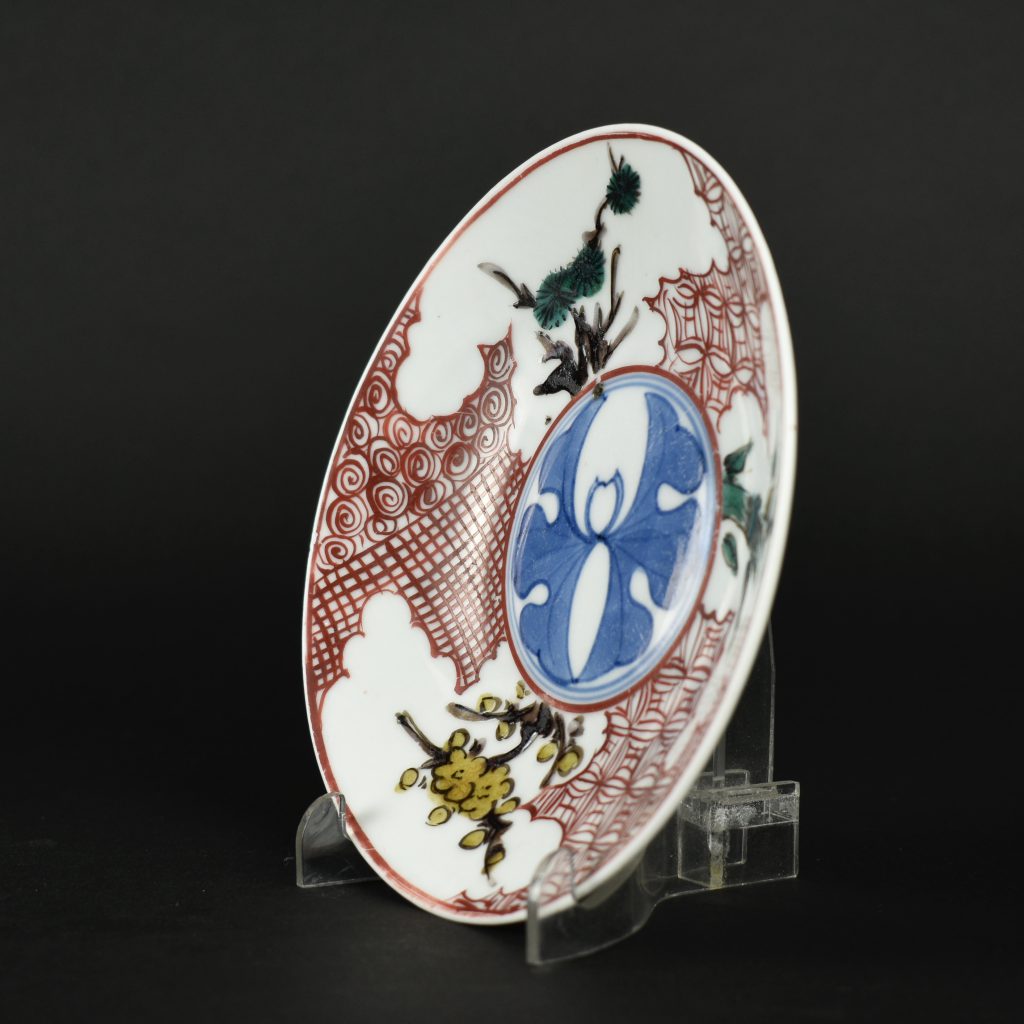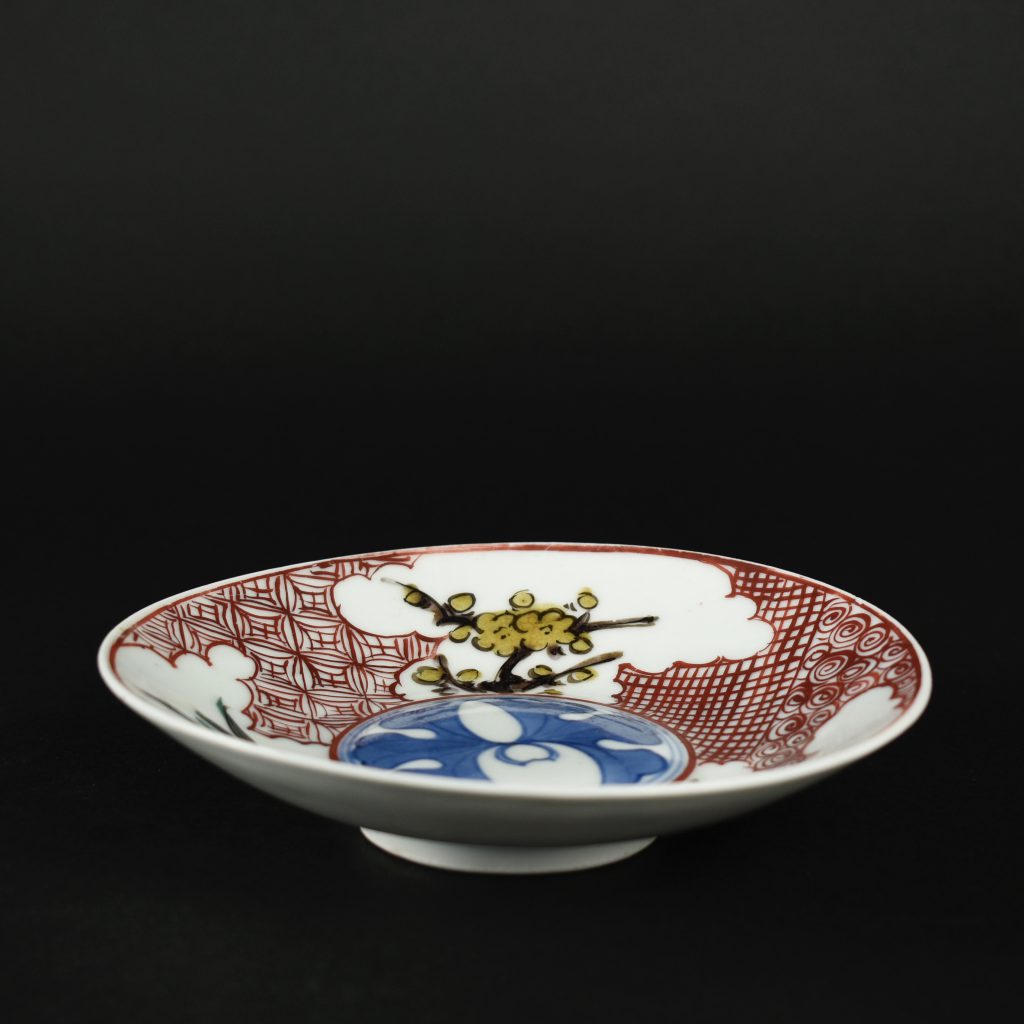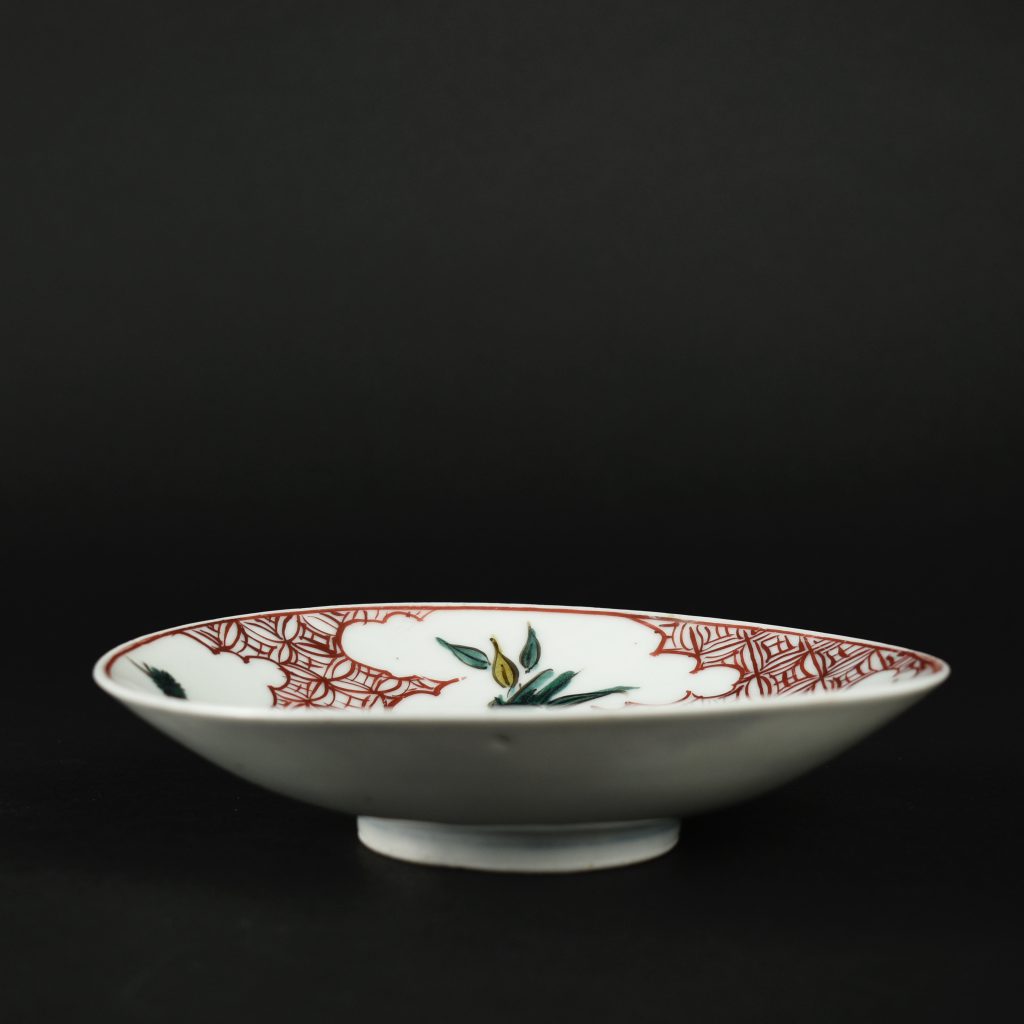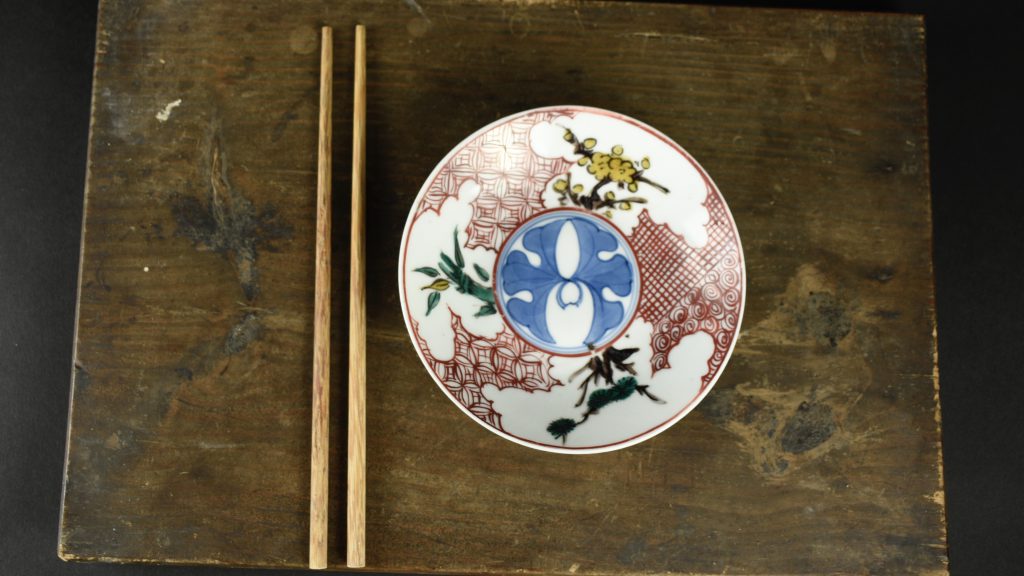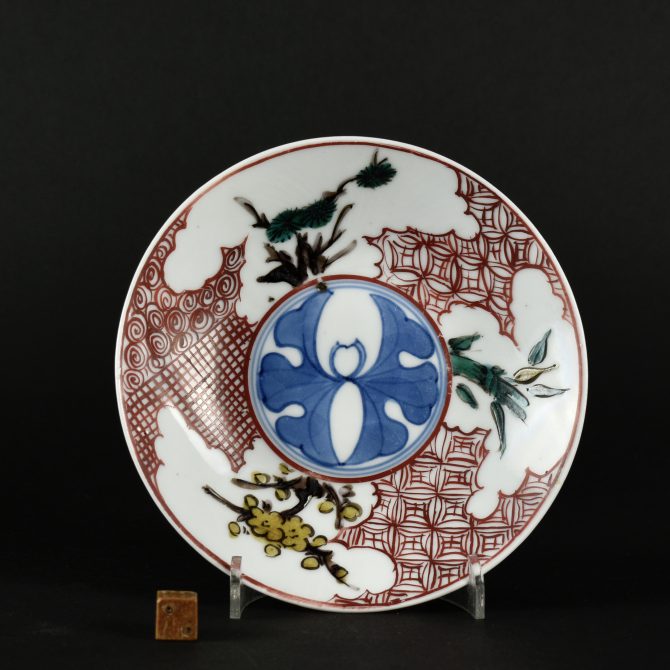
A 17th Century Ko-Kutani Dish
Go-Sai or Reigen Period 1655 - 1687
A 17th Century Ko-Kutani Style Dish c.1655-1670. This Ko-Kutani style dish, Arita Kilns. The design consists of a central roundel decorated in underglaze cobalt blue with what are perhaps two gingko leaves. The overglaze decoration is of shôchikubai or the Three Friends of Winter; pine, prunus and bamboo. These are painted within cloud shaped panels and set against iron-red brocade designs.
SOLD
- Condition
- In excellent condition, somw minor scratches and very light wear. Two pieces of kiln grit to the front.
- Size
- Diameter 14.6 cm (5 3/4 inches)
- Provenance
- N/A
- Stock number
- 25847
